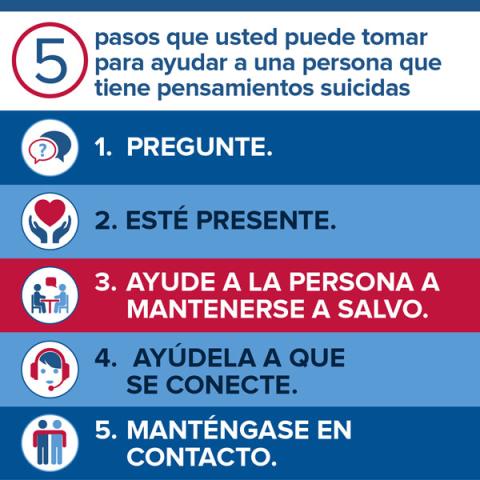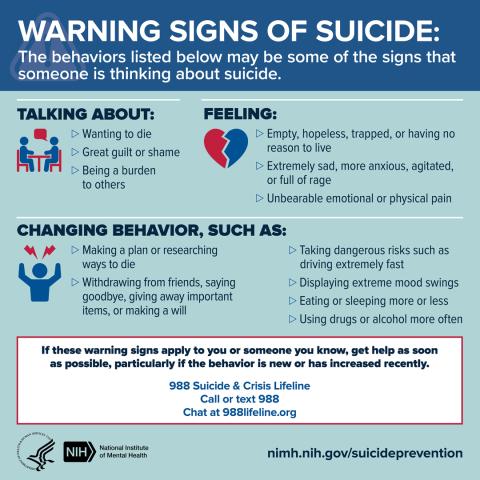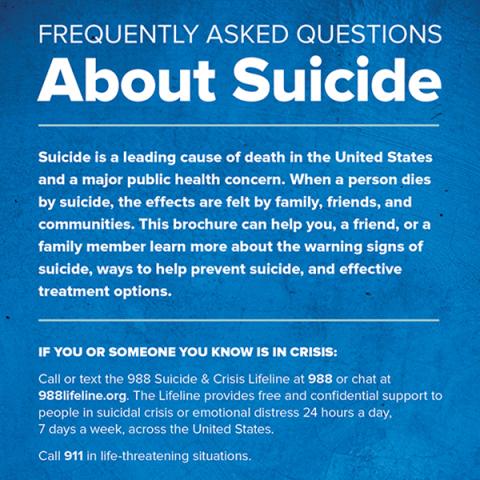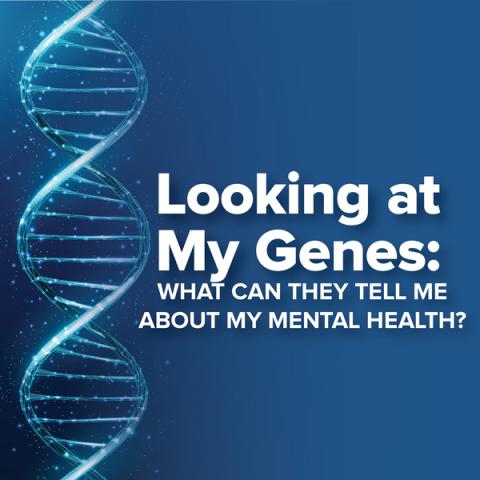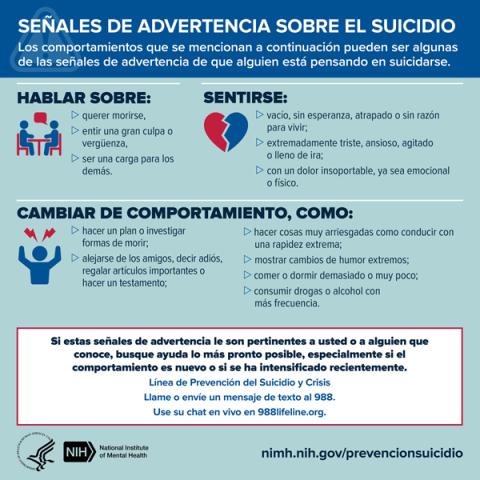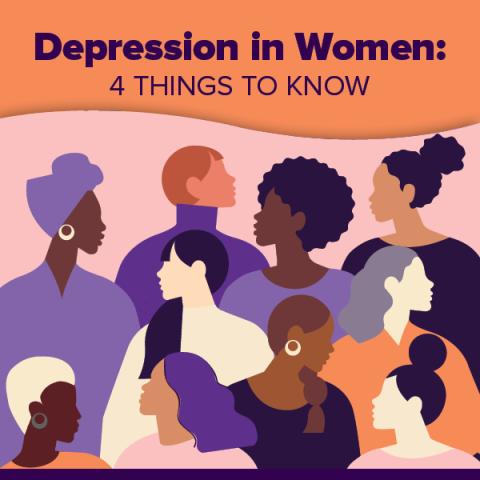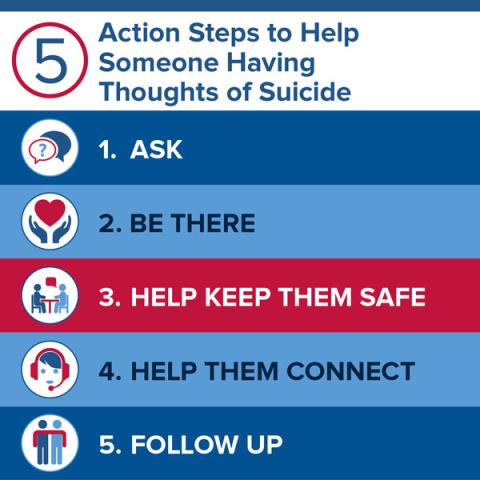
This fact sheet presents five steps for helping someone who is having thoughts of suicide. The steps include: Ask, Be There, Help Keep Them Safe, Help Them Connect, and Follow Up.
NIMH publication orders are temporarily suspended. Please check back for updates.
Related Publications
-
Esta hoja informativa muestra cinco pasos que puede tomar para ayudar a una persona que tiene pensamientos suicidas. Los pasos incluyen: pregunte, esté presente, ayude a la persona a mantenerse a salvo, ayúdela a que se conecte, manténgase en contacto.
-
This infographic presents behaviors and feelings that may be warnings signs that someone is thinking about suicide.
-
This brochure provides information about suicide including risk factors, symptoms and warning signs, treatment options and therapies, how to find help for yourself or others, and research about suicide and suicide prevention.
-
This fact sheet provides information on how you can look at your family health history and your genes to determine your risk of developing a mental disorder. It describes the difference between clinical genetic testing and direct-to-consumer genetic reports and how research on genetics is contributing to the diagnosis and treatment of mental disorders.
-
Esta hoja informative presenta comportamientos y sentimientos que pueden ser señales de advertencia de que alguien está contemplando suicidarse.
-
This fact sheet provides information about depression in women including signs and symptoms, types of depression unique to women, treatment options, and how to find help.
Order publications by phone
Solicitar publicaciones por teléfono

